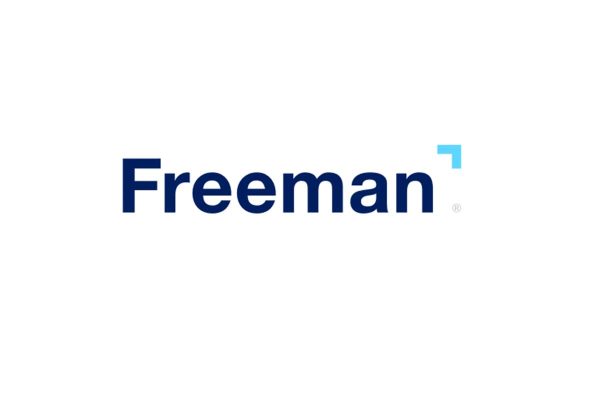
The world’s auto brands were dressed to the nines for the opening day of Auto Guangzhou. In 2009, China became the world’s largest auto market, surpassing the U.S. for the first time, and solidifying China as the brightest spot in many an auto executive’s annual plan.
China auto market
The automotive industry in China enjoys a special niche as one of China’s official strategic industries and lately it seems unstoppable. Try these statistics on for size; auto sales have been increasing at an average rate of 23 percent per year for the last 10 years.
Auto.sohu.com reported that in November 2010, 1,697,000 light vehicles were sold in China, a 26 percent increase year-on-year, and almost double the U.S. sales figure of 873,000 for the same month.
Even more interesting are the profit figures. According to the September 2010 edition of China Business News, Volkswagen’s Q1 2010 global profit was USD 942,000,000, with USD 383,000,000 in China, while in fiscal year 2009 Toyota reported a global loss of USD 4.4 billion but a profit of USD 1 billion in China.
How does this translate into daily life? Imagine this, approximately 12,000 new cars go on the road every week in Beijing, and as China’s population continues to achieve prosperity, more and more people are hungry to buy the biggest, most luxurious cars they can afford as part of their new lifestyles; even if that means endless hours in traffic or being required to leave your car in its parking spot one day a week to ease traffic congestion.
Auto exhibitions in China
It’s no wonder auto exhibitions are very popular in China; consumers love to comparison shop in one place and manufacturers can sell a large volume of cars right on the stands. Nearly every city in China hosts its own auto show, and with over 100 fully registered shows, that means a lot of business for the exhibition industry.
The largest show every year is Auto China, a global A show which normally takes place in April, and alternates between Shanghai and Beijing. China has become the market of choice for many automakers to stage global launches; examples being, the Mercedes-Benz GLK in 2008 and the Porsche Panamera in 2009.

Auto Guangzouh 2010: tech future
Auto Guangzhou is the second largest show in China and for most manufacturers it is also the most important China A show. This year it attracted over 654 exhibitors, 6,000 press members and nearly 450,000 visitors.
The theme of this year’s show is tech-future, and both Chinese and international brands responded with a display of their latest technologies.
Green vehicles are a huge topic in China and many brands had interesting vehicles on display including the Lexus hybrids GS450h & GS600hl, the Honda Fit hybrid and the Mercedes-Benz S400 Hybrid. Chevrolet displayed the new Volt and local brands Geely and BYD also displayed hybrid and battery technologies.
Exhibition design
In terms of overall design, the show was a bit scaled back this year, with many exhibitors going with their standard global brand look such as Ford, Audi, Volkswagen and Toyota.
One exception is the manufacturers located in the Guangzhou region, dominated by Guangqi Automotive Company (GAC).
Because this region is home for them, they always put extra emphasis on the Guangzhou show. Leading this group in terms of interesting design were Guangqi Honda, a joint venture between Honda of Japan and GAC.
Honda utilized a moving circular LED screen to launch three new vehicles; the new Accord, the new Fit, and the first mass production model of a completely new brand developed by the JV company, Everus.
DongFeng Nissan, a JV between Nissan Japan and DongFeng Motors, also launched a self-developed car for the Chinese market, featuring the car emerging through a wall.
In general, the overall brand presentation continued a trend from the last few years. Overseas brands are trying to appeal to the sought-after Chinese consumer, while Chinese brands try to raise their image as international brands.
A good example is Mercedes-Benz, whose stand featured giant Chinese calligraphy characters to describe their key product features such as innovation and safety. Mercedes also departed from their normal sophisticated approach with a press conference aimed at the young consumer promoting what they tout as their young family of luxury cars.
Meanwhile, many Chinese manufacturers are imitating the Japanese brands who tend to go for a grand, clean, white look. A standout among this group was Shanghai Automobile International Company, whose brands Roewe and MG, formerly the British brands Rover and Morris Garages, make strong connections back to their British roots.
MG sported a prominent Union Jack and a historical display of MG models from 1924 – 1963 as part of their launch of the new MG3.
However, the design kudos were mainly stolen by Shanghai General Motors, a JV between SAIC and GM, whose displays both in terms of new vehicle features and interactive technologies were outstanding in comparison to most manufacturers.
Exhibition production
In terms of exhibit production and event management, this is big business. Some of the manufacturers use their regional B-exhibition kits for Auto Guangzhou, but many build new stands.
For some of the most high-profile brands, the production spend might be USD 1,000 per square meter, approximately $100 per square foot, on the construction alone. This is significantly less than in many other markets, chiefly because the labor costs in China are still far lower than in Europe or the U.S.
Overnight work is commonly required due to short setup times; the official installation period for Auto Guangzhou was 9 days, including any rehearsal period. Typically, the manufacturers also use their exhibit partners as turnkey agencies for these projects, asking them to manage hall fees, electricity, overtime charges, and other required services within fixed overall project budgets.
Future
Although the China auto sector has been booming for 10 years, change is in the air. According to China4Auto.com, and industry news outlet, consumers are concerned that the largest cities could exert tighter control on license plates and preferential policies to help ease congestion and emissions.
At the same time, the government is pushing ahead with reforms designed to consolidate the industry and strengthen the top manufacturers. How these changes may impact the global auto sector, and the China auto exhibition industry, remains to be seen.
Karen Arndt has lived in Greater China for 15 years, five of which have been in Shanghai. She is the managing director of Mainland China for Uniplan, a European-Asian live communication company. Uniplan offers concept development, design, production, installation and show services for exhibitions and events out of their 7 locations in Greater China. For more information, visit www.uniplan.com or e-mail Karen at k.arndt@uniplan.com.
| Home |
| People on the Move |
| National News |
| Regional News |
| Features |
| Tradeshow Calendar |






























